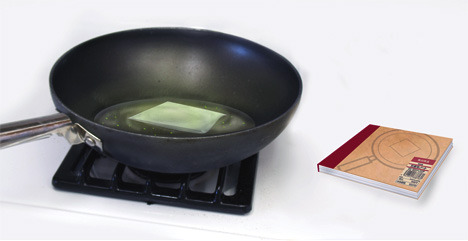Where food meets the awesome-charming-super-cool combination of science and technology and art and passion.
Don't wanna be here? Send us removal request.
Text
i've been so dormant for years attending personal life stuff but now i'm back like a fine aged wine. gotta go get what's up in the on the food & drink side of tumblr.
but first, how's life treating you? :)
1 note
·
View note
Photo

Six days into the Chemistry Advent Calendar! Missed any so far? Catch up here: http://www.compoundchem.com/2015advent/
863 notes
·
View notes
Photo
because why not

8 cast-iron skillet recipes that will change your life
129 notes
·
View notes
Photo

New Seaweed Tastes Just Like Bacon When Fried
Professor Chuck Toombs has been working with scientists at Oregon State University (OSU) to engineer and harvest a unique variety of dulse that, when fried, tastes just like the fatty, delicious meat but with greater health benefits.
“Dulse is a super food, with twice the nutritional value of kale,” Toombs said in a statement. “And OSU has developed a variety that can be farmed, with the potential for a new industry on the Oregon coast.”
Like most “new” health foods you’ve never heard of before, dulse has been produced and consumed in Iceland for centuries. Furthermore, it is well-known as a natural source rich in fiber and loaded with vitamins, minerals and antioxidants.
87 notes
·
View notes
Video
youtube
Has anyone ever told you “if you can’t pronounce it, you shouldn’t eat it?” Have you ever bought a product because it promised to be “natural” or “chemical free”? Frankly, that’s all ridiculous, from a scientific point of view.
Everything we eat, whether it was made in a field or a factory, contains chemicals, and many of those have intimidating and mysterious names. But that alone is no reason to fear or avoid them. Many of the foods that we deem “natural” are far from it, having been molded by human breeding for thousands of years.
This awesome vid from AsapSCIENCE debunks some of the biggest chemophobia myths out there, so starting today, stop being afraid of what you don’t yet understand, take time to really learn about what you’re putting in your body, and take a big bite of science with every meal.
628 notes
·
View notes
Photo

If you like spicy mustard, thank a caterpillar A new study explains why we owe the spiciness of mustard, horseradish and wasabi to an ancient ‘arms race’ between plants and caterpillars that dates back to the dinosaurs.
97 notes
·
View notes
Video
youtube
Super Wheat: Where did it come from?
Norman Borlaug spent most of his life fighting world hunger and led an effort to grow more productive, disease-resistant wheat strains.
By: How Stuff Works.
9 notes
·
View notes
Photo

12 food additives to avoid The newly released Dirty Dozen Guide to Food Additives identifies twelve ingredients in food that are potentially hazardous to your health.
89 notes
·
View notes
Photo

Nonalcoholic Beer that Smells Alcoholic is Tastier Consumers often complain that alcohol-free beer is tasteless, but some of the aromas it lacks can be carried across from regular beer. Researchers from the Univ. of Valladolid have developed the technique, using a pervaporation process, and a panel of tasters has confirmed its effectiveness. “This technique consists in using a semipermeable membrane to separate two fractions from alcoholic beer: one liquid phase in which alcohol is retained, and another gaseous phase, where the aromatic compounds come in,” Carlos Blanco, one of the authors, explains to SINC. “Then, this gaseous phase can be condensed, the aromatic compounds extracted and added to non-alcoholic beer.” Read more: http://www.laboratoryequipment.com/news/2014/11/nonalcoholic-beer-smells-alcoholic-tastier
18 notes
·
View notes
Photo

Tasting room at a California winery complete with grapevine root chandelier
1K notes
·
View notes
Photo

Rising temps may push coffee farmers to find new land Haiti has a long history of growing coffee, but climate change may make an impact.
83 notes
·
View notes
Photo





muji spice book
Traveling with your spice rack is not ideal. This is why Japanese company, Muji, has made a book of spices to make flavoring your food while away from home a little bit easier.
This book from Muji is full of pages that are made of spiced paper, which dissolve from the heat and moisture of cooking. Now that kick of white pepper or red chili is just a tear away. And, since it is compact and perfectly portable, the Muji spice book is ideal for when you’re traveling!
86K notes
·
View notes
Photo






Just… whoa.
Recipes Suspended in Air via Honestly Yum
1K notes
·
View notes

















